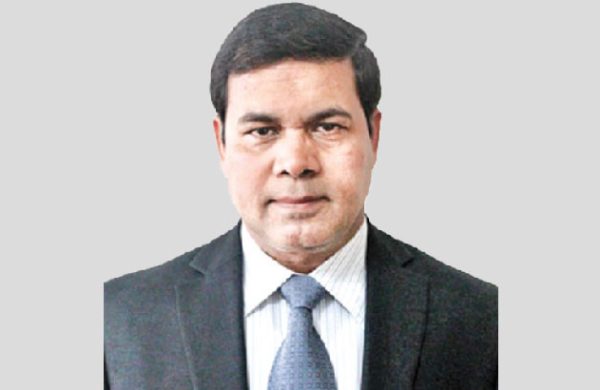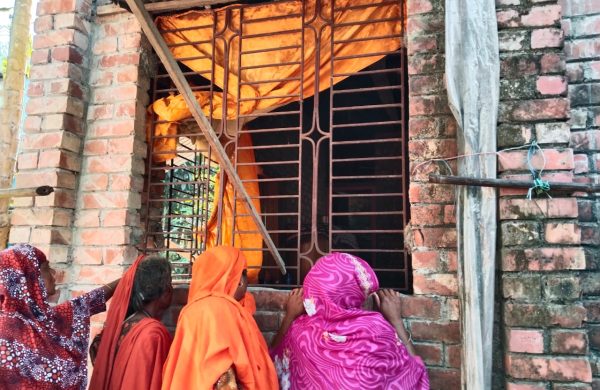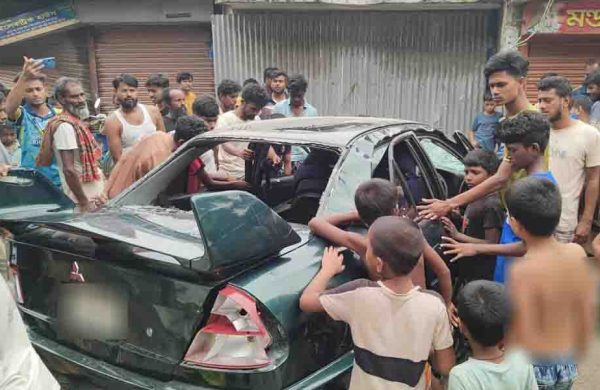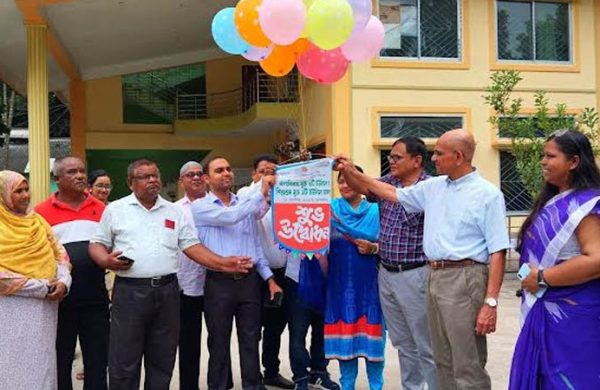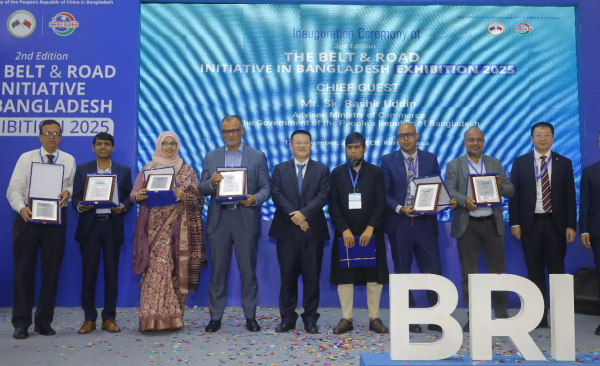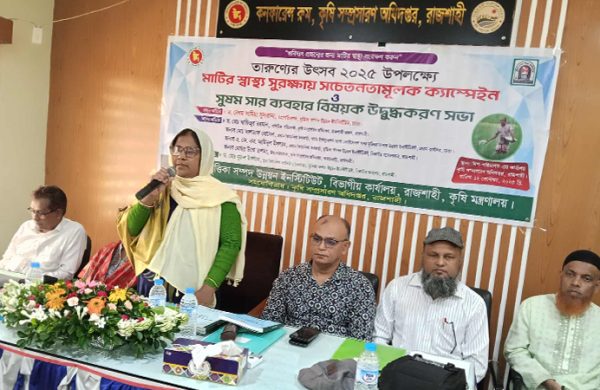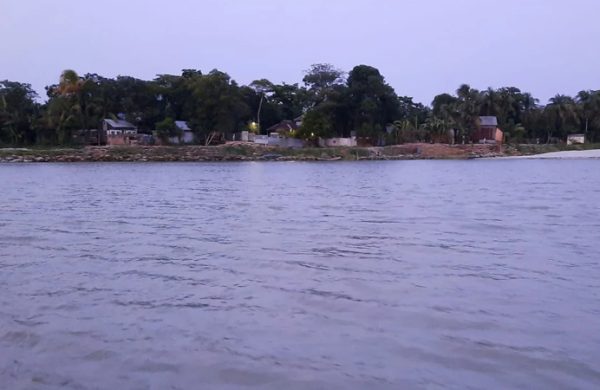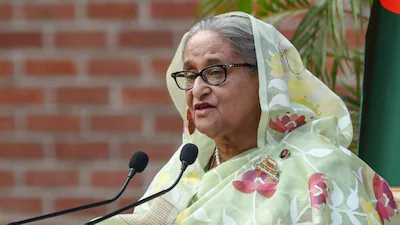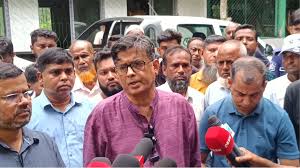A Development Conundrum in Coastal Bangladesh
- Update Time : Monday, February 10, 2025

—Dr Md Roushon Jamal—
Blue grabbing of green crop fields for brackish water shrimp farming in southwest coastal Bangladesh has long been criticised for salinisation, reduced crop production, occupational shift, migration, marginalisation of farmers, increasing social conflict, income inequality, and unemployment. This socio-ecologically irresponsible farming system has been expanded to vast crop fields in southwest coastal Bangladesh over the last four decades. Business and policy people branded this export earning sector as the ‘White Gold’ industry and called this massive farming shift a ‘Blue Revolution’.
However, the unplanned expansion of the low-yielding extensive shrimp farming is now neither competitive in the global shrimp market nor socio-ecologically sound. The current declining production trend, upcoming risks, reduced competitiveness, and the dismal prospect of the shrimp industry strongly call for a new land use policy supporting the reversion of shrimp farming into crop agriculture, where possible.
Grabbing agricultural lands in the name of development and farming shift has been a pressing global issue posing significant food security and socio-economic concerns. Nearly seven million hectares (0.6%) of global cropland are lost annually because of unabated land grabbing for non-agricultural purposes and farming shift to aquaculture, salt farming, and social forestry. Land grabbing has long been a crucial global debate and issue of development discourse.
The predatory dimensions of ‘developmental’ investments have promoted the commodification of land in the name of ‘sustainability’, ‘conservation’, or ‘green’ values. Corporate land grabbing and subsequent transformation of agricultural land into human settlements, industrial parks, economic zones, roads, infrastructure, large-scale shrimp aquaculture, and even plantation forests have threatened the sustainability of ecology, agriculture, and food security.
Land grabbing is a more crucial issue in Bangladesh, a land-scarce and densely populated country. Influential people, businessmen, corporate elites and big investors manipulate political power, muscle power, and administrative threats to grab crop fields, waterbodies, public places, forests, and char lands. Currently, more than 60% of Bangladesh’s total land area is used for agricultural production, while the global land use share for agriculture is less than 10%. Bangladeshi farmers grow multiple crops in 5.95 million hectares (73% of total cropland) land to achieve an increased food production target. Thus, occupying fertile lands for extensive shrimp farming or other non-agricultural purposes poses significant risks to food security, livelihoods, and ecology.
The term ‘blue-grabbing’ symbolises acquiring green paddy fields of small farmers for shrimp farming – which is branded as ‘Blue Revolution’. Extensive farming of brackish water shrimp has added an extra dimension of land grabbing by local influentials and business elites. Largescale grabbing of crop fields for brackish water shrimp farming has created a new land use crisis in southwest coastal Bangladesh.
In the wrapping of the ‘Blue Revolution’, influential business elites gradually grabbed the crop fields in the regions. Blue grabbing of green paddy fields started in the 1970s at the cost of compromised biodiversity, reduced rice production, rising salinity, migration of marginalised rice farmers, and endless social conflict. As of today, more than 50% of crop fields in southwest coastal Bangladesh have been transformed into brackish water shrimp farms by elite influentials.
Meanwhile, export-oriented shrimp farming achieved the ‘White Gold’ industry status because of its export potential. Even the government and policymakers have justified this blue-grabbing for economic development. The National Shrimp Policy 2014 set a goal to earn more than USD 1.5 billion by 2025. Accordingly, the Ministry of Fisheries and Livestock declared the open expansion of extensively cultivated brackish water shrimp, facilitating fast conversion of crop fields into shrimp farms.
However, the unwise expansion of low-yield shrimp farms has been proven to be unsustainable and environmentally irresponsible over time. Extensive brackish water shrimp farming is no longer a competitive farming option. With declining profitability due to the low yield of black tiger shrimp, disease infestation, increasing production cost, and fluctuating market price, the prospect of the shrimp industry is falling in the domestic as well as international markets. The dismal prospect of declining shrimp farming prompted farmers to alter their farming options.
Now time has come to rethink and review the decision to spare any more green crop fields for shrimp farming. Failure to protect multiple-cropped fertile crop fields on Monday might threaten food security tomorrow.
Modification or reconversion of agricultural land for sustainability is a common practice in many countries. For green development, a critical consideration of soil health, salinity, profitability, socioeconomic stability, and sustainable resource management is inevitable. Integrated blue-green farming systems with sustainable incorporation of freshwater prawn, brackish water shrimp, multilayer white fish rice, and dike crops (e.g., vegetables, fruits, spices) could be a profitable farming practice in the southwest coastal Bangladesh. However, implementing this blue-green farming system bears some farming and hydrological challenges.
Structural modification and farming reversion will require investments, research, and policy support. Therefore, Bangladesh should now opt for sustainable, judicious, and fair land zoning, well-thought-out agricultural planning, timely land use law and efficient integration of crops and aquaculture systems in salinity-affected southwest coastal Bangladesh for accelerating sustainable development and ensuring food security for all.
_____________________________________
The writer is a civil servant. He can be reached at [email protected]





